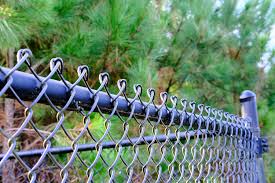Over and above their functional application, fences maintain powerful symbolic importance in individual societies, symbolizing concepts of possession, personal identity, and social restrictions. As actual physical symptoms of limitations, fences design our perceptions of area and effect our interactions using the built setting. Let’s explore the much deeper which means behind fences (ploty) and realise why these are not only structures—they are emblems of man culture and modern society.
1. Acquisition and Territory:
Fences symbolize management and territorial boundaries, marking where one particular property ends and the other starts. By identifying restrictions, fences create feelings of management and control over territory, reinforcing personal or collective personal identity. In non-urban areas, fences serve as perceptible marker pens of property ownership, delineating career fields, pastures, and house lines. In metropolitan adjustments, fences demarcate private home from general public space, asserting possession and exclusivity.
2. Interpersonal Division and Exclusion:
fences (ploty) may also signify social divisions and exclusions in culture. Great surfaces and barriers may indicate divorce and inequality, making actual physical limitations that divide neighborhoods based upon socio-financial position or another variables. Alternatively, fences with open up gates and reduced surfaces represent inclusivity and connection, inviting interaction and cultivating a feeling of community. The style and presence of fences reflect primary societal dynamics and energy constructions.
3. Cultural Personality:
In many ethnicities, fences maintain deeply social relevance and they are imbued with symbolism that demonstrates social principles and customs. As an example, in many countries, elaborate fences are icons of standing and reputation, showing riches and affluence. In contrast, in other ethnicities, simple and practical fences can be respected with regard to their usefulness and utilitarianism. Comprehending the cultural circumstance of fences allows us to take pleasure in their symbolic importance in several communities.
4. Psychological Restrictions:
Fences may also represent psychological restrictions that outline private area and autonomy. By producing actual physical obstacles, fences provide people who have feelings of security and personal privacy, letting them determine borders and handle usage of their individual room. This sense of boundary handle is crucial for keeping emotional well-simply being and social relationships, since it allows people to assert their autonomy and shield their private limitations.
5. Environment Effect:
The proliferation of fences has environment effects, particularly in organic countryside and wild animals habitats. Extensive fencing can fragment habitats and affect wild animals corridors, impacting biodiversity and ecosystem overall health. Even so, eco-warm and friendly fencing alternatives, for example wildlife-helpful designs and permeable limitations, offer you alternatives that stability individual needs with ecological efficiency. By reducing their environmental footprint, fences can give rise to the preservation of normal panoramas and wild animals environments.
To sum it up, fences are not just actual structures they can be signs that symbolize intricate interpersonal, cultural, and mental health dynamics. As guardians of boundaries, fences condition human interactions and scenery, reflecting and strengthening social ideals and norms. Appreciating the symbolic significance of fences improves our idea of the constructed atmosphere and our partnership using the territory.
